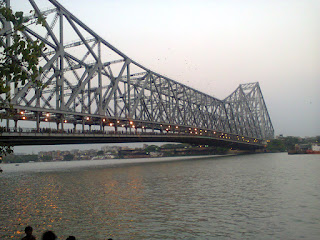 Since
my college days, as a fan of Mario Miranda, I have been following his cartoons
till today. Introduced through The
Illustrated Weekly of India to the Indian audience in 70s, Mario Miranda
and R.K.Laxman both became familiar names within a short period. Both the
cartoonists were totally different in their perception and approach to their
respective works. Mario liked to capture the life of affluent and westernised
people and unmask their reality beneath that show off, whereas Laxman liked to
capture the feelings, aspirations and predicaments of common Indian man in
different situations. Both were equally
good in sensitising the situation and bring out the best — both were equally
famous.
Since
my college days, as a fan of Mario Miranda, I have been following his cartoons
till today. Introduced through The
Illustrated Weekly of India to the Indian audience in 70s, Mario Miranda
and R.K.Laxman both became familiar names within a short period. Both the
cartoonists were totally different in their perception and approach to their
respective works. Mario liked to capture the life of affluent and westernised
people and unmask their reality beneath that show off, whereas Laxman liked to
capture the feelings, aspirations and predicaments of common Indian man in
different situations. Both were equally
good in sensitising the situation and bring out the best — both were equally
famous. 
 . I was in Mumbai to
attend a function in the month of November 2017, and was staying at YWCA ,
which is quite nearby to this Mondegar
Cafe, to be precise, a fifteen minutes’ walk. It is at the entrance of Colaba
as a landmark. Whenever I visit Mumbai, I never miss to visit this cafe because
of its ambience, because of Mario Mirando’s exquisite murals on its walls. One
needs to visit this place to see and feel the celebrations of Mario Miranda’s
cartoons in each and every corner of this joint, in all possible manners. This
cafe has two big murals: one reflects the life in Mumbai, and the other one
reflects the atmosphere of the cafe. These murals adorning the walls of the
cafe since1990s have given visual treat to the visitors who drop in to chill
out, after a hectic day.
. I was in Mumbai to
attend a function in the month of November 2017, and was staying at YWCA ,
which is quite nearby to this Mondegar
Cafe, to be precise, a fifteen minutes’ walk. It is at the entrance of Colaba
as a landmark. Whenever I visit Mumbai, I never miss to visit this cafe because
of its ambience, because of Mario Mirando’s exquisite murals on its walls. One
needs to visit this place to see and feel the celebrations of Mario Miranda’s
cartoons in each and every corner of this joint, in all possible manners. This
cafe has two big murals: one reflects the life in Mumbai, and the other one
reflects the atmosphere of the cafe. These murals adorning the walls of the
cafe since1990s have given visual treat to the visitors who drop in to chill
out, after a hectic day.
A few minutes after the dusk, when we entered
the pub, it was bustling with people, mostly youngsters. Big tall beer bottles
were sitting at the centre of each table. The Mirando girls with toothy smile on
the containers meant for tissue papers were there to greet everyone. The girl
holding a fork in hand on one of the containers, with a big smile invited us to
a small cosy table in the corner. From that point, we could see and feel the
commotion in the other room too. Interestingly, the other room had a very large
mural of a man carrying huge wooden beer containers on his cart pulled by a
horse and westernised men standing in three piece suits with funny looks, by
Mario Miranda in black and red. We ordered beer and finger chips. To feel the
hustle and bustle, to hear the clattering of the glasses, to enjoy the visual
beauty of the pub, we were there. The waiter came with a tin of beer, a couple
of glasses, and a plate of finger chips. Wherever we stretched our eyes, we saw
Mario glaring at us amusingly, I thought. With Mario’s drawing on the plate,
the finger chips tasted very delicious. The waiters sported Mario’s cartoons on
their white T shirts. I politely asked one of the waiters to take some
photographs for me, he obliged very
happily after knowing that it is for a blogger. Enthusiastically, he took some
more photographs and obliged me and Miranda together. We said cheers to Mario and enjoyed our
drinks with a relish. If every artist’s works adore the walls of public walls
in this way, there will be a great cultural change.








